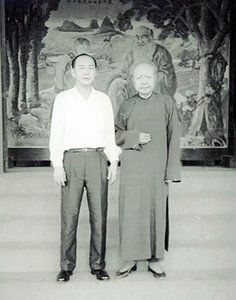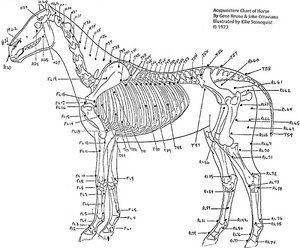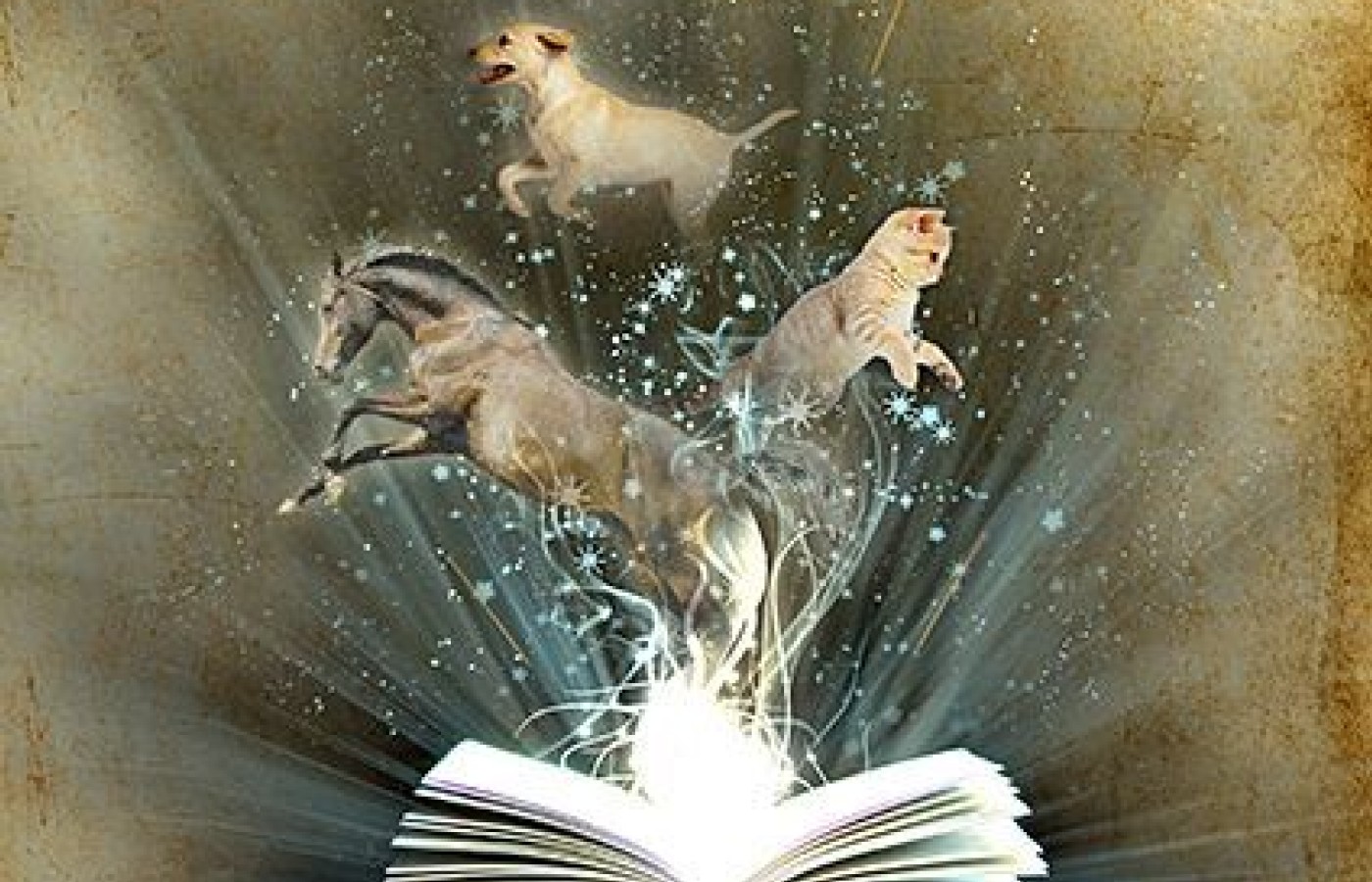People today want convenience, whether it be from their bank, credit card, favorite retail store, or restaurant. They demand it from the companies who hold their loyalty, including their health care providers (you). They don’t want to call and possibly be put on hold, and they want to use an app or schedule an appointment on your website. Here are three reasons your practice can gain by switching to online appointment scheduling.
A History Worth Telling
The popularity and the use of acupuncture for the treatment of animals in the United States is at its peak. Today, it is not uncommon for our patients to be four-legged dogs or cats seeking relief from an ailment. Interestingly, little is known about the history of the treatment of animals with Traditional Chinese Medicine.
For nearly 3,000 years, from the Zhou dynasty and the reign of Emperor Mu around 930 B.C., up until the Yuan dynasty of the 14th century, Chinese medicine was used sparingly on large animals. Much of the focus was on the treatment of horses since they were so essential to the military. We have records of certain publications that included animal acupuncture, but over this long span of time they were very few in number. From the time of Emperor Mu, if we fast--forward over 2,500 years to the end of the 16th century in Europe, we discover the very first (in the Western world) comprehensive book on the anatomy of a non--human species entitled Anatomia del Cavallo (Anatomy of the Horse), written by Carlo Ruini. The first veterinary college (of the Occidental world) was founded in Lyon, France, in 1762.
So as you can see, the origins of animal acupuncture in China were nearly 3,000 years ago, but the beginnings of Western veterinary medicine were just over 400 years ago. We also have 16th century accounts from Jesuit missionaries of acupuncture being done in the east. Acupuncture was embraced by many French clinicians at this time. However, animal acupuncture was not practiced in Europe at all. It is clear from the history that animal acupuncture has always been the domain of acupuncture, and not Western veterinary medicine.

The following is a snapshot of animal acupuncture in the United States as it gained steam to move forward.
Working with the NAA
We know that animal medicine was explored in large animals, particularly focusing on horses over a fairly extensive period of time. We also know that it was never fully explored, and that most of the most valuable texts have been lost for centuries. We also know that modern China did not explore animal acupuncture until 1975. This was four years after the re--introduction of animal acupuncture, which took place in the United States! Yes, you read that correctly. The re--emergence of animal acupuncture did not did not occur in Asia but in the United States. It is critical to note that acupuncturists, not veterinarians, introduced animal acupuncture into the United States, and thereby re--introduced it to the world.
The National Acupuncture Association (NAA) was the first formal professional organization for acupuncturists in the U.S., organized as a non--profit corporation. In 1971, the National Acupuncture Association (NAA) created its Animal Acupuncture Research division in an effort to understand if acupuncture had a practical use for treating diseases and functional disorders in large and small animals. Dr. William Prensky, the President of the NAA, enlisted the assistance of our first teacher, Dr. Ju Gim Shek, to help us with locating and translating animal charts. I worked with Dr. Prensky and Dr. Ju on these charts, and this gave us a start on being able to understand some of the points that were used on large animals in ancient China. There were no modern charts and there were no charts on small animals. The original educational organization that was formed because of our studies with Dr. Ju Gim Shek was the Institute for Taoist Studies (ITS). Dr. Prensky was successful in getting Dr. Ju and the ITS to cooperate with the NAA on the veterinary acupuncture work, and Dr. Ju even helped us with the connections that eventually allowed us to treat horses at the race tracks.
Members of the NAA team, acupuncturist John Ottaviano and myself, had been treating our own dogs and friends' animals with good results. Dr. Prensky believed it would be logical to put us in charge of the animal acupuncture research. In 1972, a small animal veterinarian named Richard Glassberg, DVM, contacted the NAA about his interest in using acupuncture to treat small animals and the veterinary acupuncture project soon became a major focus of the NAA.
Dr. Glassberg was not the first veterinarian to contact us about their interest in acupuncture for animals, but he was definitely the most persistent. He agreed to work with us on comparative anatomy if we taught him how to treat animals using acupuncture. We decided to meet with him, but Ottaviano and I knew we had a problem -- how were two young Italian--Americans in their early 20s going to convince veterinarians that they were experts in animal acupuncture?
We were the veterinary research division of the NAA, we knew more than anyone else about treating small animals, and we had a direct connection to the UCLA Acupuncture Research Project, but we were still concerned that we add more depth to our team. To broaden our appeal we enlisted the assistance of a Korean acupuncturist named Sang Hyuck Shin. In the legal climate at the time, he was not practicing acupuncture, but he was game to try with us. So he joined our team and traveled with us a good bit in the first year or so.
Opening New Doors
Dr. Glassberg introduced us to Dr. Alice DeGroot who worked as resident veterinarian for a horse--racing farm in Chino, Calif. She was known as one of the best equine surgeons on the West Coast. We made a special trip to meet Dr. DeGroot who had been told who we were, and that we wanted to treat one of her horses. Dr. Glassberg had told her we would try to treat a horse with a problem for which she had no effective treatment. It turned out she was waiting for us -with a horse dying of the "heaves" (emphysema).
We were very surprised. We had assumed she might have a horse with a musculo--skeletal condition, or a leg problem, but not this! We knew that Dr. DeGroot was setting us up for failure and was trying to get rid of us. There is no treatment effective for the 'heaves' in horses and this horses looked terminal -- she could barely walk! We had done a little comparative anatomy on the horse, and of course we were familiar with the treatment of asthma and emphysema in humans, but honestly, we were barely half sure of our locations. Remember that this was the early 70s and none of the existing ancient charts on the horse had been translated! But, we began the treatment and within 15 minutes the horse began to breathe normally. The effect was more than stunning. Dr. Glassberg had trouble lifting his jaw off the ground and Dr. DeGroot was speechless.
Needless to say, Dr. DeGroot invited us back the following week and the week after that. By our fourth trip, the horse no longer showed symptoms of emphysema, and Alice had another five horses for us to treat, including some from nearby neighbors. During this time we also reached out to veterinarians we knew. Dr. William Prensky spoke with his vet, Dr. Craig, and he asked us to come by his clinic. I did this myself and met his associate, Dr. Joel Rossen, who enthusiastically began studying Chinese medical theory and acupuncture, and would eventually become one of my life-long friends.
After working with Drs. Glassberg, DeGroot and Rossen for several months, two things became crystal clear: First, the results of acupuncture on animals were amazing. Every condition the veterinarians presented us with was untreatable using Western veterinary medicine, yet acupuncture was dramatically successful. Second, John and I were treating animals outside the law since we weren't licensed veterinarians, thus putting the entire research project and the reputations of the veterinarians we worked with in danger. What happened next happened almost overnight. After several phone conversations we finally discovered that Drs. DeGroot, Glassberg and others had gone to the Veterinary Board and made the request for us to be approved to treat animals under veterinary supervision using acupuncture. Within the next month, the California Horse Racing Board also allowed us to treat horses at the racetracks. We were under the supervision of the "Official Veterinarian."

This was all before there was any licensing in the country. The first licenses for acupuncture to treat humans were in Oregon and Nevada and that was still over a year into the future. Even though it seemed to us at the time accidental that we were able to do acupuncture on animals legally, it turned out to be very fortuitous for acupuncture in general. Observers could see how well animals responded to treatment. Most of dogs and horses had conditions either not treatable with traditional veterinary medicine, or else conditions that were very difficult to treat. Given the positive results from the acupuncture on animals, and also with the very enthusiastic responses from the veterinarians, it shined a bright light on the possibilities acupuncture would have for treating humans.
Ottaviano and I were now treating 10 to 15 horses each time we visited the horse ranch in Chino that was under Dr. DeGroot's supervision. This included quite a number of cases of 'founder' (laminitis), a condition that was completely untreatable with Western veterinary medicine. We also treated navicular syndrome, colic, emphysema, chemical sensitivity, and other conditions related to musculo--skeletal disorders. Many of these horses were from private individuals around the area and were brought out to the DeGroot farm each week. Occasionally, when it was difficult to transport a horse, Dr. DeGroot would take us to a nearby farm to treat the animal. It wasn't long before Ottaviano and I each had two clinics where we treated small animals, plus Dr. DeGroot's ranch for treating horses, as well as the racetracks.
Presenting the Evidence
In September of 1973, the National Acupuncture Association sponsored a three-day conference on Acupuncture that was held at UCLA. At this conference at UCLA, I presented the initial findings of the NAA's animal research project. By this time we had treated hundreds of horses and thousands of dogs. As a result of this work, we had clinical findings that were quite astounding. It was proposed, by some at the time, that acupuncture worked as a type of "hypnosis." It was clear from our clinical studies that we were not hypnotizing horses to rid them of their laminitis. Some critics at the time stated that acupuncture in humans could be explained as a kind of suggestibility response, and at best it was a kind of placebo. So how could acupuncture work on animals? How did a dog know we were suggesting that their hip dysplasia or their back pain should simply go away? How did a horse with emphysema know that acupuncture was not really just a placebo?
Earlier that year, sometime during the summer of 1973, Ottaviano and I had finished our first drafts of dog charts and horse charts. Ottaviano later completed a chart for cats.

This horse chart was our second attempt. In the first horse chart we did not use the prefixes "FL" for front leg, or "RL" for rear leg, etc. We used only numbers. Our first chart showed up in Dr. Sheldon Altman's book entitled, An Introduction to Acupuncture for Animals, 1981.
One of our goals at the time was to teach a core group of veterinarians the principals of Chinese medicine and acupuncture. We had a few who were serious and were beginning to start treating animals, so in the summer of 1973 we created the National Association of Veterinary Acupuncture (NAVA). We hoped that within a few years they would have their own teaching staff to train other interested veterinarians. In 1975 with help from NAA's Veterinary Acupuncture Research Team, the International Veterinary Acupuncture Society (IVAS) was formed. Today, IVAS has training seminars for Veterinarians in North America and Europe and Australia. Later, the American Academy of Veterinary Acupuncture (AAVA) was formed by members of IVAS. And currently the International Academy of Animal Acupuncture (IAAA) is in the process of beginning its certification program in animal acupuncture, which will be only for licensed acupuncturists.
Between the summer of 1974 and the end of 1975, an interesting series of events occurred that would shape the future of acupuncture in the U.S. forever. This series of events had its origins in the work of the National Acupuncture Association that began with the Institute for Taoist Studies, back in 1969.
I'm going to briefly go back to 1969 and explain some of the work of the National Acupuncture Association. Discussing the work of the NAA is important for several reasons. First, without the NAA team there never would have been an Animal Acupuncture Project, and animal acupuncture would not have been introduced into the U.S. in 1972. Second, the establishment of the first schools by the NAA would likely not have occurred. Third, the licensing that occurred in several states from 1973 to 1976 would definitely have been delayed for years. All of these factors, taken together, may have led to a very different outcome than what actually occurred. For example, a significant delay in the licensing of lay individuals in the practice of acupuncture may have allowed medical doctors to take full control of acupuncture, and could have resulted in non--MDs not being licensed to practice acupuncture.
But I also feel it necessary to at least briefly describe the atmosphere of the nation during the 1960s as all of this led up to the birth of the profession of acupuncture and Chinese medicine in the U.S. As we all know, 1969 was the year Apollo 11 astronauts Neil Armstrong and Buzz Aldrin walked on the Moon; it was a time of upheaval in college campuses over the Vietnam War; it was the time of Mao Tse Tung and Red China; it was a time of fear of Atomic War; it was the time of the Cold War; and for many of my generation it was also a time of spiritual renewal and hope.
But this decade was also filled with anguish. It wasn't too long after the assassination of John F. Kennedy, then Martin Luther King was shot and then Robert Kennedy was shot. And of course the draft was forcing tens of thousands of young men 18 years and older to fight in Vietnam. There were riots in over 100 cities across the nation. Nevertheless, in the midst of this tumultuous time, there were signs of spiritual upheaval across the nation. The Civil Rights Act of 1968 intensified the Civil Rights Movement, the Free Speech Movement was at its peak, and young people across the country were searching for the answers to questions.
In fact, the small core group of the NAA were among those young seekers.
Resources:
- www.metmuseum.org/toah/hd/shzh/hd_shzh.htm
http://en.wikipedia.org/wiki/Western_Zhou
http://en.wikipedia.org/wiki/Li_Su - Alan M. Klide, Shiu H. Kung, Veterinary Acupuncture
- Hunter, Pamela, Veterinary Medicine, A Guide to Historical Sources, 2004. Marc Mammerirck, Claude Bourgelat: avocat des veterinaires, Bruxelles, 1971 http://rheumatology.oxfordjournals.org/content/43/5/662.long
- Altman, Sheldon, DVM; An Introduction to Acupuncture for Animals, 1981.
Author Note: Part II of this article will continue the story of Animal Acupuncture and the journey of the NAA team to Boston, back to Los Angeles and then Oregon. For more information, visit the International Academy of Animal Acupuncture at www.facebook.com/AnimalAcupunctureAcademy.



